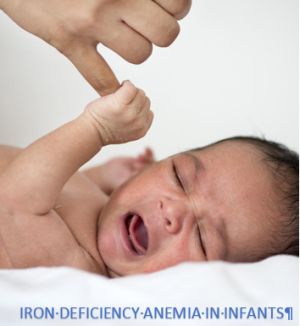The Prevalence of iron deficiency anemia in infants in a Portuguese population
Abstract
INTRODUCTION
Iron deficiency is the world most prevalent nutritional disorder which is associated with impaired neurocognitive function in infants. The prevalence of iron deficiency anemia (IDA) in Portuguese infants remains unknown. The last study was performed by one of us (HA) in 1994 in a sample of 188 infants revealing a prevalence of IDA of 19%. The main objective of this study is to determine the current prevalence of IDA in a sample of infants nine months of age in Braga, Portugal.
METHODS
This was a cross-sectional study on a random sample of infants born from September 2016 to February 2017 at Braga Hospital. They were evaluated for anthropometry, socio-economic factors, feeding regime and a blood sample was taken for blood cell counts, serum ferritin and C reactive protein.
RESULTS
Forty-two infants were included. The prevalence of IDA was 7.1%. Nine infants were anemic (21%); moderate anemia was observed in 2/9 of infants and mild anemia in 7/9 infants. Of the 3 infants with IDA, 2 had been exclusively breastfed until 6 months.
CONCLUSIONS
Compared to a study from 1994, there may have been a reduction in the prevalence of IDA in this area in Portugal.

Authors retain all copyrights. In making a submission to World Nutrition, they are certifying that all material is theirs except quotations, as indicated, and that they have obtained permission for any photos, tables, or graphics taken from other publications or websites.




